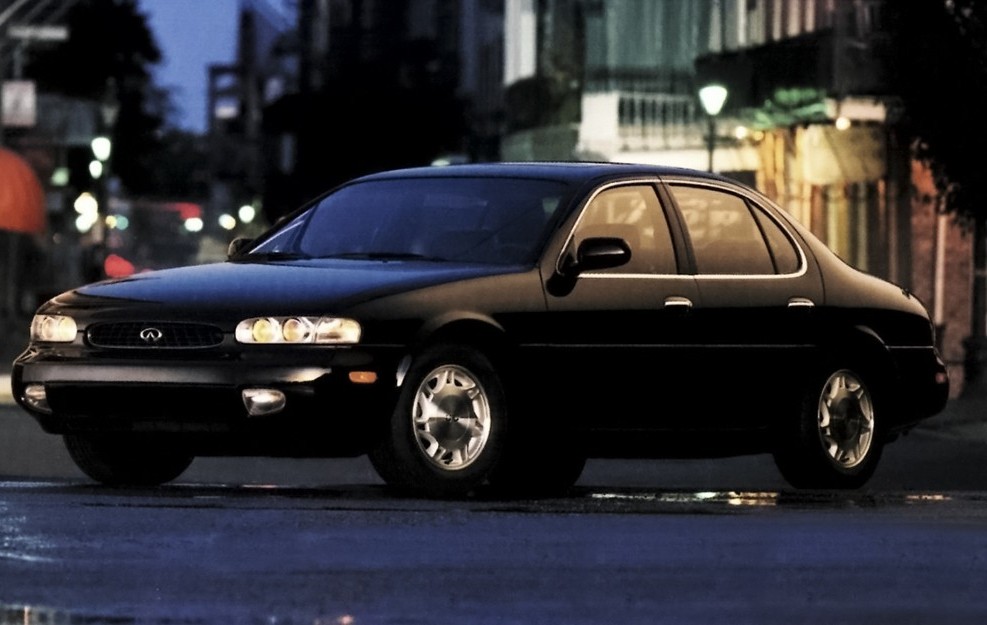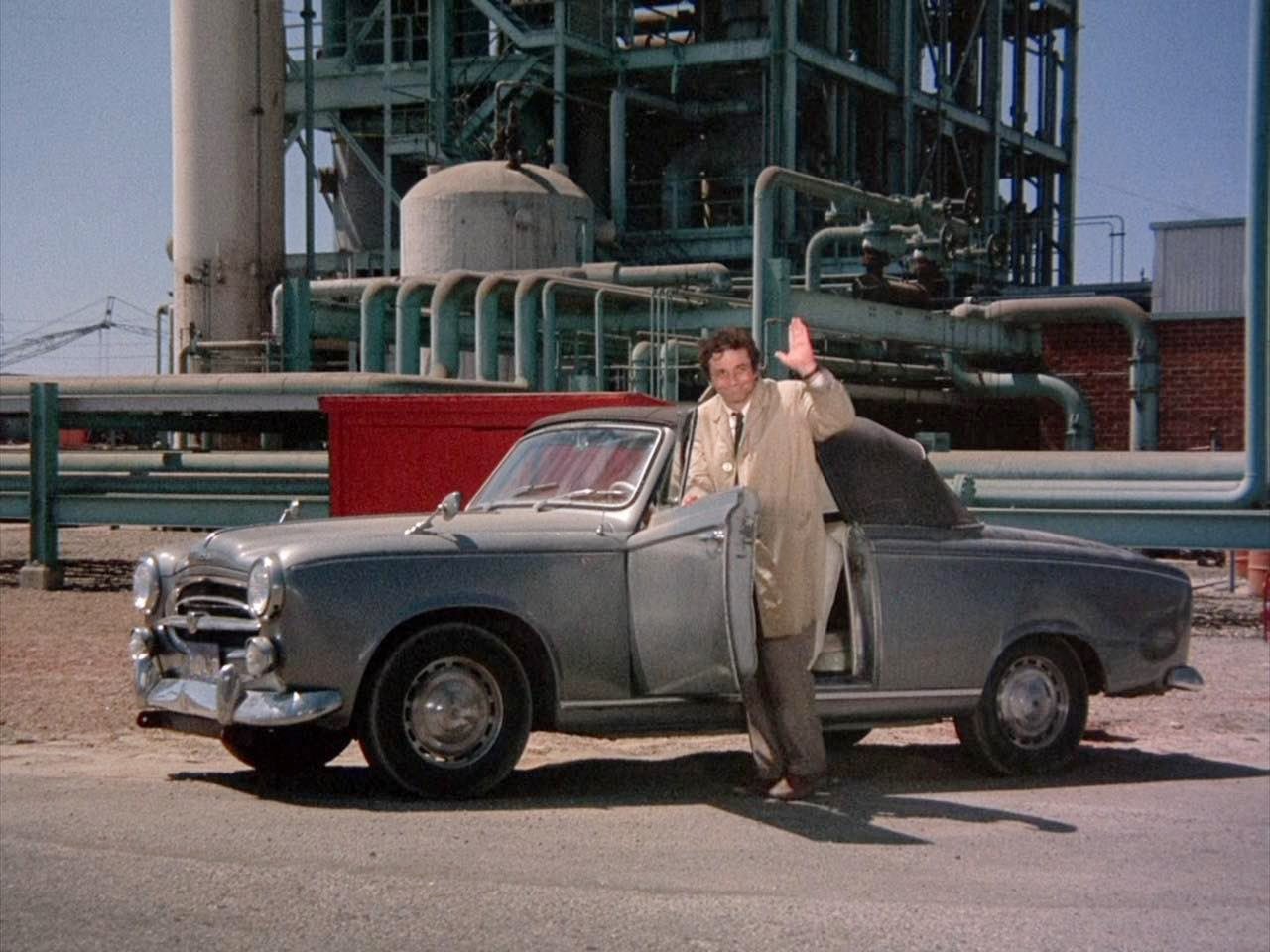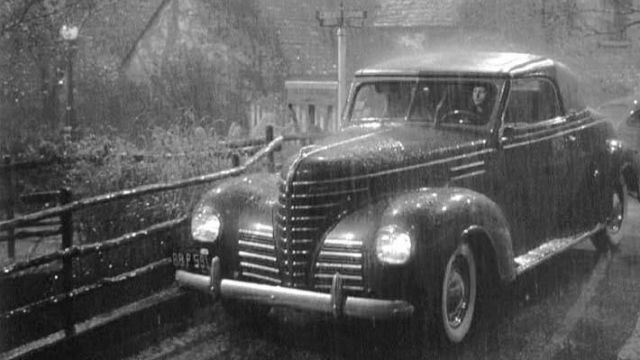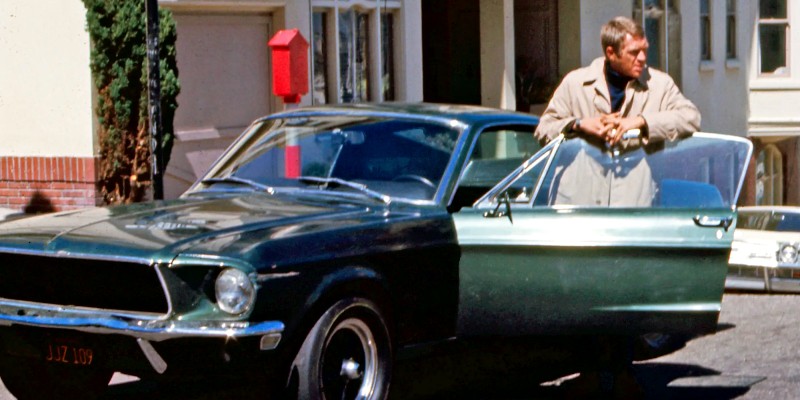When I started writing Welcome to The Game, I knew the car would be a lead character. I’m not claiming any of Wernher von Braun’s deductive powers here. After all, the novel’s protagonist is an ex-rally driver who sells niche performance cars in not just any old city, but the Motor City, and who unwittingly becomes involved in a heist, the successful execution of which requires a very specific driving ability.
Cars bring to the modern thriller what horses brought to the Western; namely, speed and excitement, car chases, drive–bys, hit and runs and so forth. I’m not saying one needs a car chase to make a bank robbery exciting. That’s the wonderful thing about imagination – anything can be made exciting in the right hands. But let’s just picture, for a moment, Steve McQueen and Ali McGraw doing their getaway thing in The Getaway – but on foot. Or on push bikes. You see where I’m coming from? Not the same movie. Probably, not even a movie – more of a series.
The longer we drive, the more learned we become in caranthropology. (Yep, made it up). We may breeze down the highway, lane-guidance activated, latte in hand, listening to Ted talks, but we’re still using the primordial survival instinct that looks for patterns and possible threats. We note the condition, make and model of other cars, the manner of driving and what those things say about the person at the wheel. They actually say a lot. It can be the type of car I buy is of no importance to me as long as it’s safe, economical and gets me from A to B. But whatever it is saying, the car offers so much potential for informing on character and character background. I had tremendous fun, and gave careful consideration to, deciding what cars my characters drove in Welcome to The Game.
Now for some fun. Imagine someone you really love has just been murdered. If that’s problematic we can go a little Trumanesque and add that you’re actually a character in a nineties movie and just didn’t know it. Better? Wow, look at your hair! Now, tell me: What car do you want to see the heat rolling up in to investigate the horrific slaying of your little Timmy or Chelsea or Ruffles, your shmancy bow wow? I know it’s difficult to focus through those tears and the pain of your loss, but how about this? Your hero lawman arrives in an Infiniti J30. A what? Not a Crown Vic, that long-standing, stalwart of nineties law enforcement? Not for this guy: He doesn’t want to get made as a cop by anyone he’s tailing. And he has an air of great urgency about him. You can imagine him clicking his fingers impatiently, saying to a minion, “Get me something low key, with grunt though…”. The car is dirty because the homicide department, his homicide department, is just so damned busy, ergo, experienced.
The Infiniti J30 had a rear-drive 3.0-liter V6 engine but this one is hot and panting all the same, because it’s been thrashed getting to you. As a matter of fact, our guy just got out of a police chopper on LA’s Vermont on–ramp and straight into this car. A colleague held the door open for him just to save a few seconds. I’m sure you’ve guessed, by now, how much you lucked out when this detective and his drive rocked up. It’s only Lt Vincent Hanna, aka Al Pacino, and you’re in the Michael Mann classic crime thriller, Heat.
Hanna has just fobbed off his soon-to-be-third ex-wife’s attempt at reconciliation with irrefragable honesty: “All I am is what I’m going after.” You know if that Infiniti falters at all, he’ll leave it behind on the roadside too – in a heartbeat.

The detective’s lack of need for an overtly powerful, attractive car really works for me. It’s all about the car’s compatibility with his methods and skills.
My prep for writing this involved rewatching TV and movies that featured a potentially interesting detective–car pairing. So much exquisitely painful fun was had, let me tell you. Ever heard of a series called Vega$? This was a late 70s early creation of Michael Mann with Aaron Spelling, a king of chintzy cheese back then, producing.
Vega$ ran for three seasons, although quite why is a mystery to me. Robert Urich plays Vietnam vet turned private eye Dan Tanna. Tanna lived in the theatrical props storage warehouse of a casino. I quite liked that – it seemed a little Harry Potterish for some reason.
In the pilot he drove a yellow ’63 Chevrolet Corvette Stingray but this switched to a bright red ’57 Thunderbird for the series. Both were convertibles, and always had their roofs down. Tanna would drive into his living room and park there and, since he was big and lanky, he’d just leap in or out without bothering to use doors. Perhaps an earlier version of the character had a fear of them (entamaphobia – it’s a thing). Tanna had a car phone too, in 1978! Robert Urich was toothpaste-commercial good looking. At least four of his shirt buttons were unfastened at all times and he attracted so much female attention I’m surprised he got any detecting work done.
Private eyes often have to be inconspicuous, especially when tailing a person of interest, so the car choice for Tanna seems quite terrible to me, especially seeing as its license plate states “TANNA”. It’s like a pantomime. DON’T LOOK BEHIND YOU – DAN TANNA IS FOLLOWING!”

Apparently, his character was based on a highly respected and successful, real-life Vegas-based private investigator – Eddie LaRue. I did a little digging on Eddie. He was just 5’2” and a former jockey who continued to watch his weight by only eating a quarter of any meal he ordered. He shunned technology, even the phone, in favor of old–school methods like tailing and pavement pounding. Frank Sinatra, Elvis, Howard Hughes, and The Mob were clients. He started his business in 1965 and worked until the day he died in 2020, so he must have been doing something right.
Already the real life LaRue is sounding more interesting than his glossy TV counterpart. What did he drive? A black Chevy Caprice with tinted windows and a spotlight. I found myself thinking that if LaRue parked in his living room, it would be so no one could interfere with his car, rather than because it looked cool. Whose series would you rather watch?
Let’s stay in the seventies but now you’re the wealthy and powerful perp. And you’ve got no shame. You can’t have – look at those ridiculous threads you’re wearing. Honestly, I think your nineties look worked better. What type of car does a cold–blooded killer like you want to see roll up for question time? Something old and battered? As if the detective driving it isn’t even considered worth a departmental ride?
Here it is now. Looks like your prayers have been answered. What the hell is that jalopy? It’s rusty, patched and has a stupid, drooly dog hanging out of the window! It’s a Peugeot you say? Never heard of them…
Peugeots are actually French and this one’s 1959 French. The man driving looks in keeping with the car – disheveled, bumbling and with the air of another time and place.
Oh wow, you are so going to get away with it. Why, you can relax; you’re not even going to need you’re A game for this guy. Big mistake. The clue was in the rarity of the car. It’s an eccentric choice. Eccentricity is often a sign of genius and creativity. Furthermore, a shabby appearance betrays a lack of interest in the exterior trappings of power. Anyone who judged Columbo by his clothing and conveyance ended up in the license plate factory. And people loved to see him, played brilliantly by Peter Falk, nail people like you. They tuned in for ten seasons of it, plus specials.

So, am I expounding that when it comes down to a cop and car pairing, the less of a looker at least one of them is, the more engaging the chemistry? I guess I’m saying it’s more likely, at least. But I’m a viewer in 2022. Would the same apply to an audience fifty years ago? The answer depends on what level of engagement people back then wanted when they tuned into a TV crime show. Regardless of what we may think of it, Vega$ did run for three seasons, after all, which suggests that many viewers craved simple, glossy fun and to look at glamorous people in beautiful cars. Such fare made money but not necessarily a classic.
These days, tastes are more varied than ever and there’s a greater appetite for darkness and uncertainty. I can imagine a hilarious skit of Aaron Spelling being pitched some heavy duty scandi noir in 1980s LA. It’s difficult to put ourselves in the shoes of the average, hard working Joe or Geena tuning in back then to the likes of Vega$ and Magnum P.I. but I’d love to know what proportion of them had a chuckle at the thought of Dan Tanna pulling off a low key tail in his banana yellow Corvette, or Tom Selleck’s bright red Ferrari not being able to leave the bad guys far behind in their Buick Century.
I also wonder what they thought when they watched Jack Lord, step out of his black Mercury Marquis Brougham in the original Hawaii Five-0, one of the longest-running and most successful crime shows on American television. Because I’ll tell you what I thought after watching a few episodes lately. I thought that was cop/car casting genius. I mean, look at the guy! Millions of American men wanted to look like Jack Lord. Millions of their wives and girlfriends wanted them to look like Jack Lord too, apparently. He probably still looks great and he’s been dead for twenty-five years. If you met his character, Steve McGarrett, you might reasonably expect him to drive something a little swanky or dynamic. But McGarrett works hard. He works his team hard and criminals rightfully fear and respect him. A flash car often suggests the need for attention, which hints at an underlying insecurity. But Steve McGarrett’s plain black Mercury says he doesn’t have time for insecurity.
Writers get to know their characters very well; how they speak, how they dress, what buying choices they would make, everything. So, it’s fortunate they also enjoy full sovereignty over all they create. But when words make the transition from page to celluloid or HD, they can be compromised by budgetary restraints, inappropriate product placement and the vanity of actors.
I bet Raymond Chandler breathed a sigh of relief and satisfaction when he saw Bogart still driving a 1938 Plymouth De Luxe Coupe in the film adaptation of The Big Sleep. Plymouth, a salt of the earth marque, had sold over half a million De Luxes in 1937. Those figures plummeted the following year. So this car wasn’t anything special in 1946, when the film was made. Bogart made anything he touched cool, of course, but the pairing was true to Chandler’s vision nonetheless.

The car had a secret revolver compartment – a $4.95 option at the time, I believe. Marlowe would have accepted the expense, but we know he’d be thinking of it in terms of the thirty packets of smokes he could have bought with that money. When human and automotive casting are on point, it makes the audience think that way.
So, is the secret to getting this automotive partnership right really that simple? Shabby car, fine-looking actor, or vice versa – things should work? Great looking actor, eye candy car – no one over the age of eleven will believe in it? And if the lead actor has a face like a bucket of smashed crabs and drives a hoopty then this could well be an essential part of something special, real and with longevity?
Nope. There are no rules. Anything can be made to work providing there is authenticity behind the choices made. Prove it? God, you sound like your seventies self, the one that got busted by Columbo.
Fine. This guy, this car…

Steve McQueen is often described these days as the King of Cool. I guess people think that equates simply to coolness under pressure – the result of having been in a lot of scrapes and tight situations. Steve McQueen brought way more than coolness to the role of Lt Frank Bullitt.
McQueen had a truly terrible early life. There was a huge anger and pain within that took great effort to contain. He wasn’t always successful, and those close to him suffered. Ali McGraw, his second wife, said in her autobiography that their family would begin the day trying to guess which Steve McQueen they’d be dealing with. He could be cynical, sullen and difficult to manage, as well as driven and capable. Hence, Lt Frank Bullitt exudes all these things but, unlike McQueen and because the time between “Action” and “Cut” is short compared to real life, he never loses control.
So, we have this man who is cynical, ruggedly handsome, dangerous but controlled, and we put him in a fast car, one that caught his eye on the streets where he works and that a homicide detective could reasonably afford in 1968. Now the car, his car, is dented and dirty: It gets used hard and doesn’t spend its nights in a garage.
And that’s the secret. We need to be able to imagine how and why the character and car ended up together. The partnership must appear to have been born from life, not Hollywood.
***


















